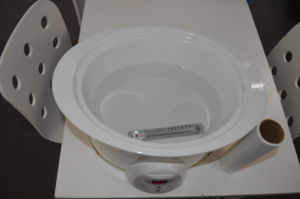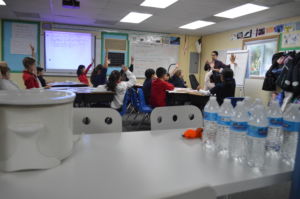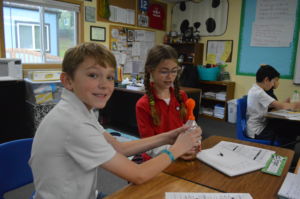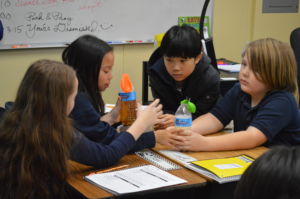Mr. Pan’s students have been studying environmental science in his fourth grade classroom this fall. During a recent lesson, students were asked to determine if temperature changes affect the properties of yeast and, if so, to describe their observations of those effects.
In the first experiment, students evaluated the effects of yeast and sugar mixed with cold water, warm water, and hot water. They were asked to describe their observations in writing for each water temperature and summarize their findings. The class also experimented with yeast that had been frozen or baked and then mixed with sugar and water, comparing the reactions of those yeast particles to the first three yeast and sugar results.
During a whole class discussion that followed, Mr. Pan called on students to share their observations, and helped them expand their summaries by using comparative and contrastive vocabulary in their analysis. Rather than accepting simple sentence answers, Mr. Pan encouraged his students to use rich vocabulary in complex sentences, like “Hot water mixed with yeast and sugar created a reaction of carbon dioxide to inflate the balloon faster than the yeast and sugar mixed in warm or cold water.”
Studying the impact of environmental changes on yeast, because it is a simple organism, is important in modern cell biology research today. We know the science lessons our fourth grade teachers are providing help lay a strong foundation for our students’ future scientific studies. The education students receive at ECS prepares them well for continued success in higher education and eventually the workplace.
https://en.wikipedia.org/wiki/Yeast






